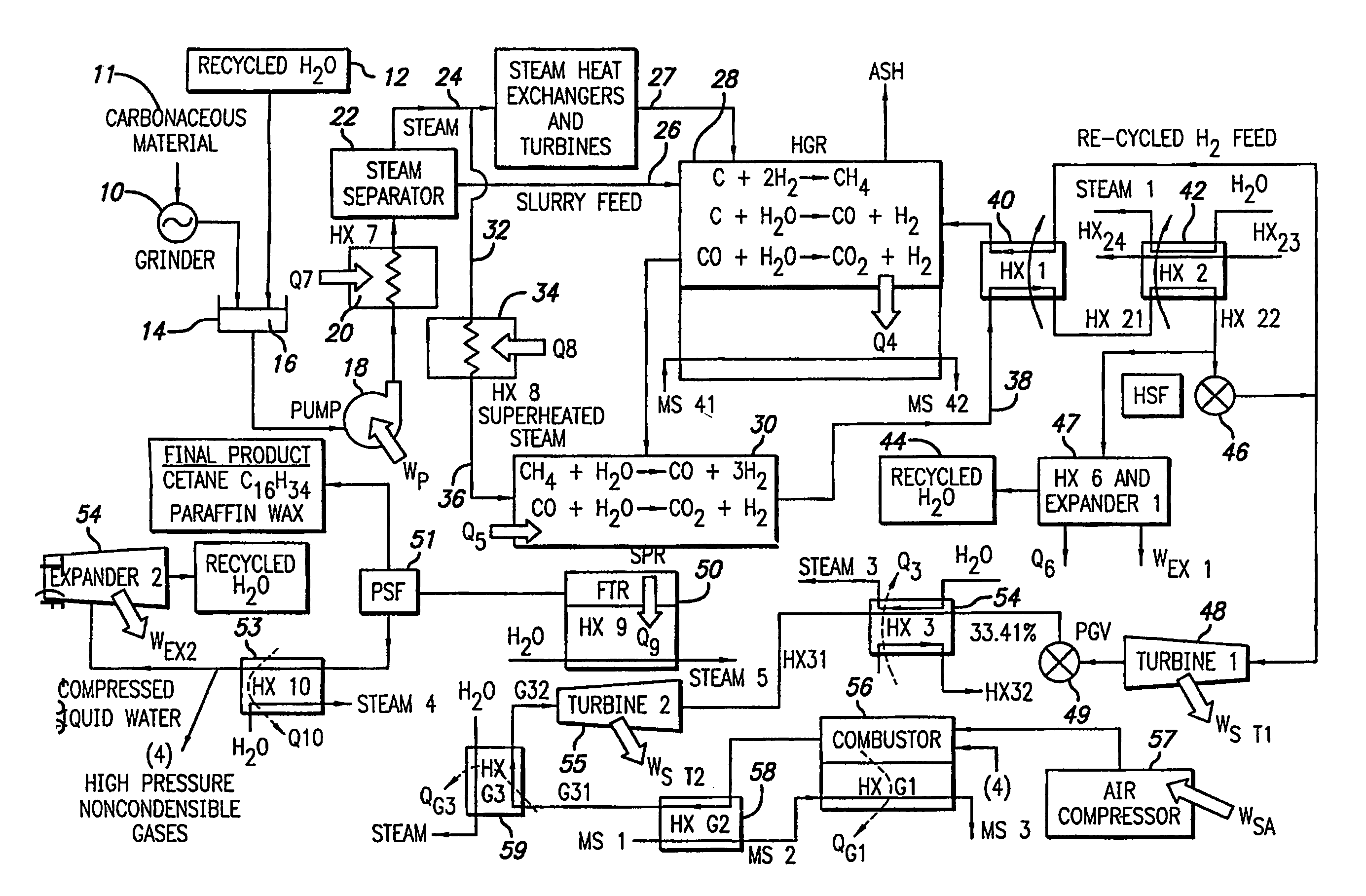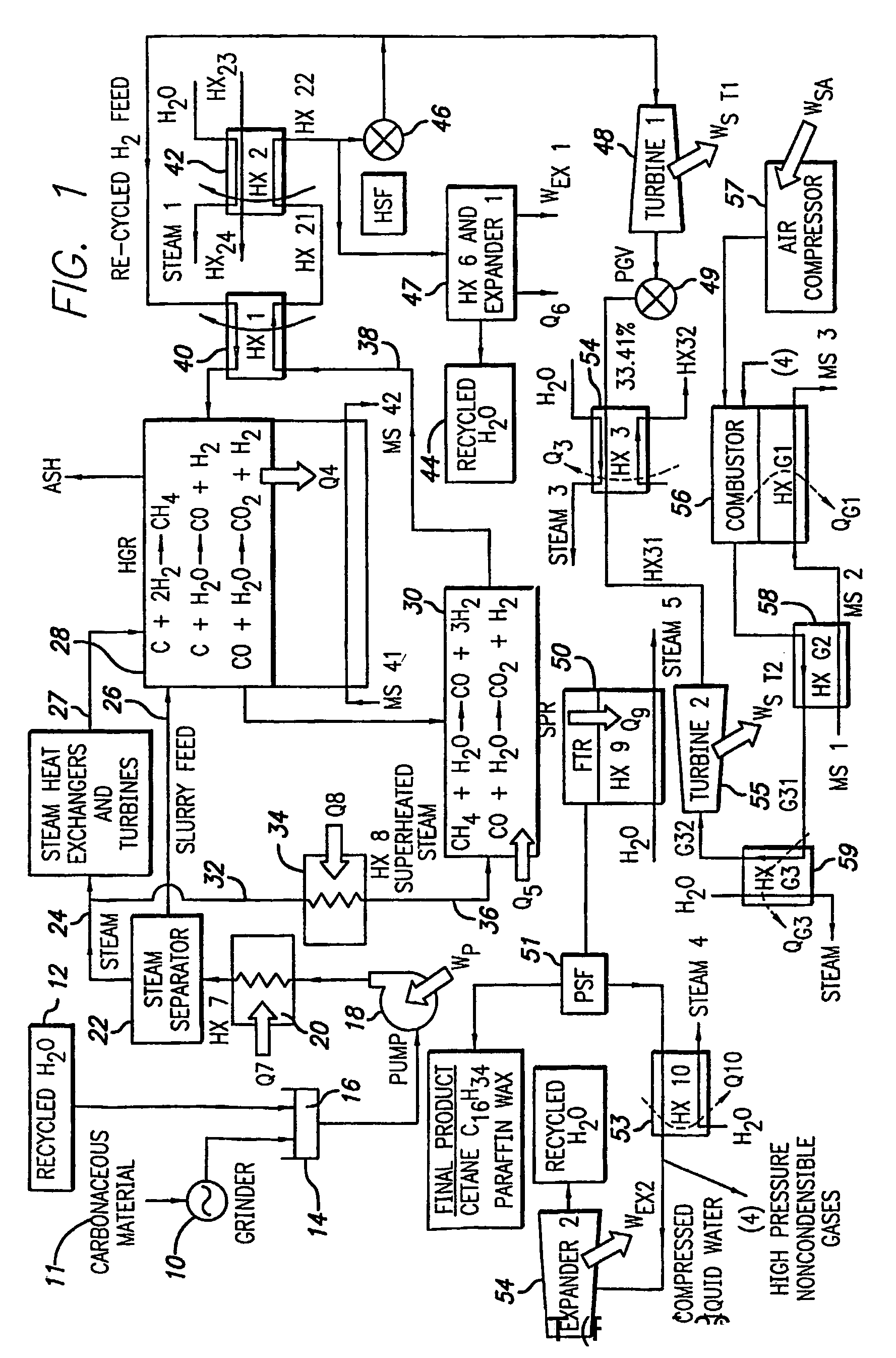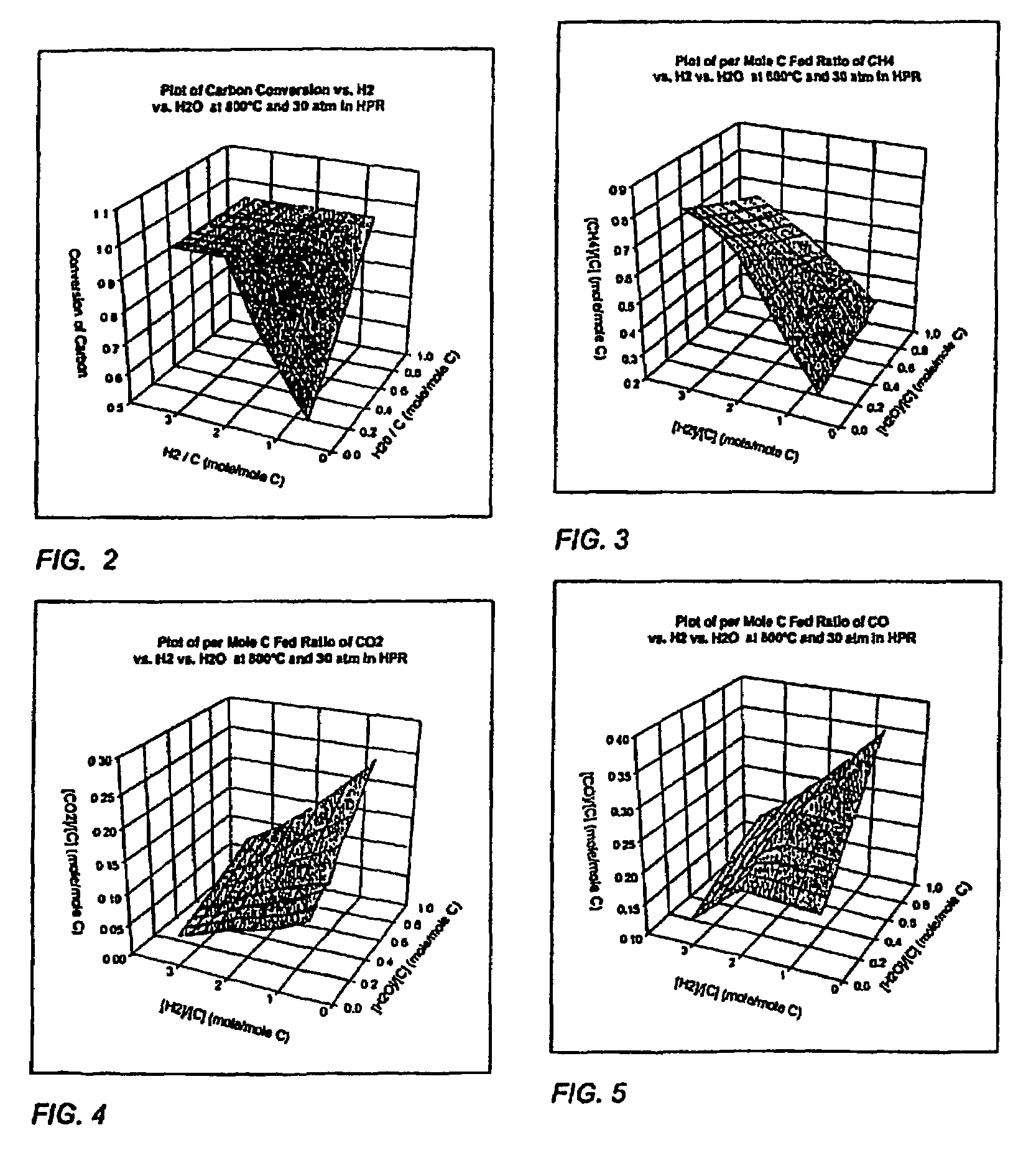Production of synthetic transportation fuels from carbonaceous material using self-sustained hydro-gasification
a technology of carbonaceous material and transportation fuel, which is applied in the direction of waste based fuel, combustible gas production, chemical production, etc., can solve the problems of reducing the catalyst efficiency, serious environmental pollution, and a major dependence on petroleum, so as to reduce airborne emissions and improve the overall efficiency of energy utilization.
- Summary
- Abstract
- Description
- Claims
- Application Information
AI Technical Summary
Benefits of technology
Problems solved by technology
Method used
Image
Examples
Embodiment Construction
[0063]A steam generator for pyrolysis, hydro-gasification reactor (HGR) and steam pyrolytic reformer (SPR) (also called a steam pyrolytic reactor, steam reformer or steam reactor) such as used in a Hynol process, may be utilized to produce the synthesis gas (syngas) through steam pyrolysis of the feed stock, hydro-gasification and steam reforming reactions. The reactions start in the HGR to convert carbon in the carbonaceous matter into a methane rich producer gas and continue through the SPR to produce synthesis gas with the correct hydrogen and carbon monoxide stiochiometry for efficient operation of the Fischer-Tropsch process. With the Fischer-Tropsch process as the final step in processing, products such as synthetic gasoline, synthetic diesel fuel and recycled water can be produced.
[0064]The feedstock requirement is highly flexible. Many feeds that consist of different carbonaceous materials can be wet milled to form a water slurry that can be fed at high pressure into a steam...
PUM
| Property | Measurement | Unit |
|---|---|---|
| temperature | aaaaa | aaaaa |
| pressure | aaaaa | aaaaa |
| temperature | aaaaa | aaaaa |
Abstract
Description
Claims
Application Information
 Login to View More
Login to View More - R&D
- Intellectual Property
- Life Sciences
- Materials
- Tech Scout
- Unparalleled Data Quality
- Higher Quality Content
- 60% Fewer Hallucinations
Browse by: Latest US Patents, China's latest patents, Technical Efficacy Thesaurus, Application Domain, Technology Topic, Popular Technical Reports.
© 2025 PatSnap. All rights reserved.Legal|Privacy policy|Modern Slavery Act Transparency Statement|Sitemap|About US| Contact US: help@patsnap.com



